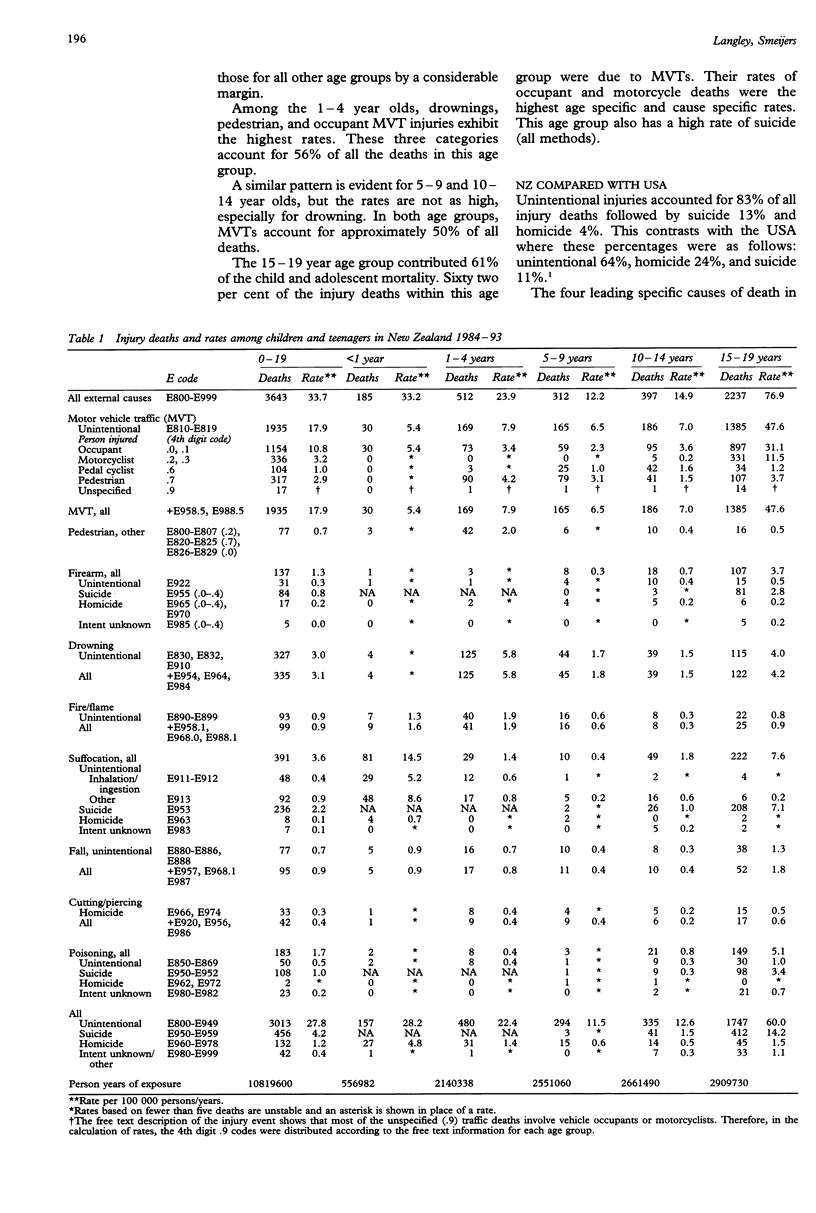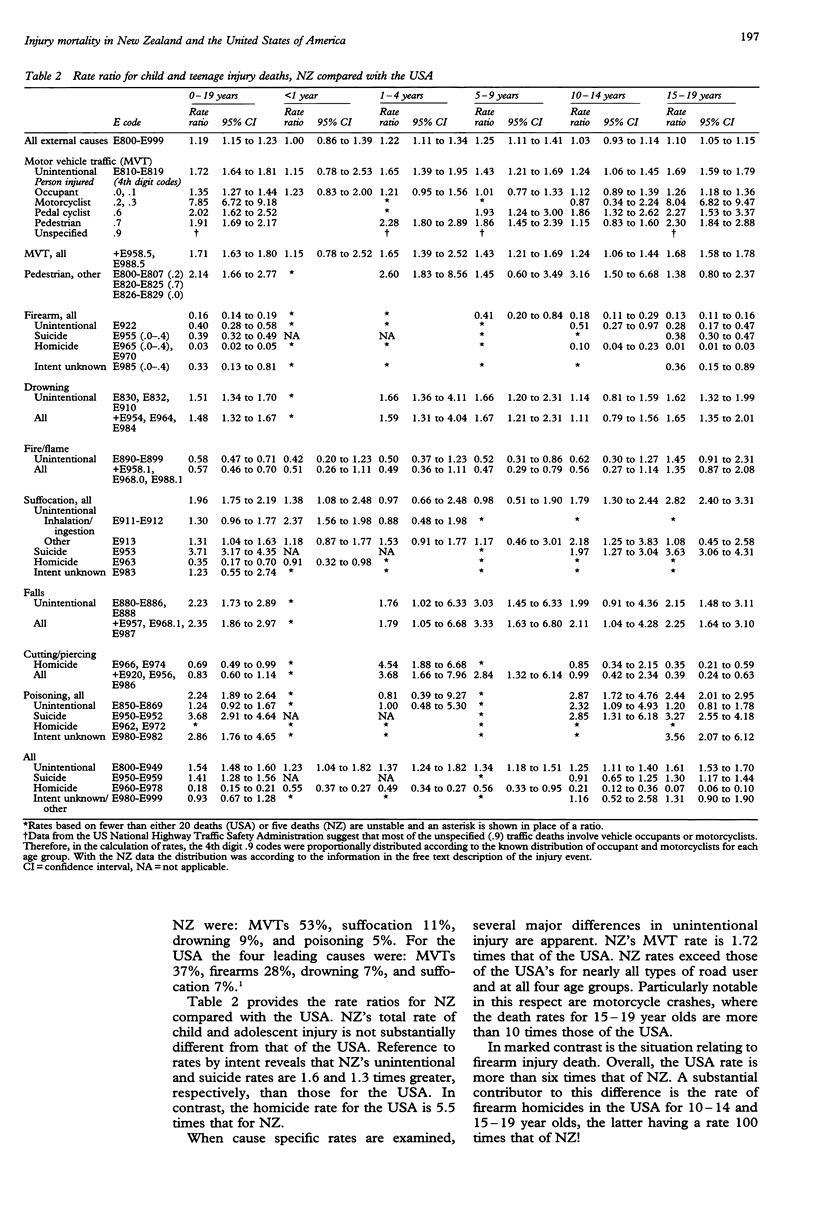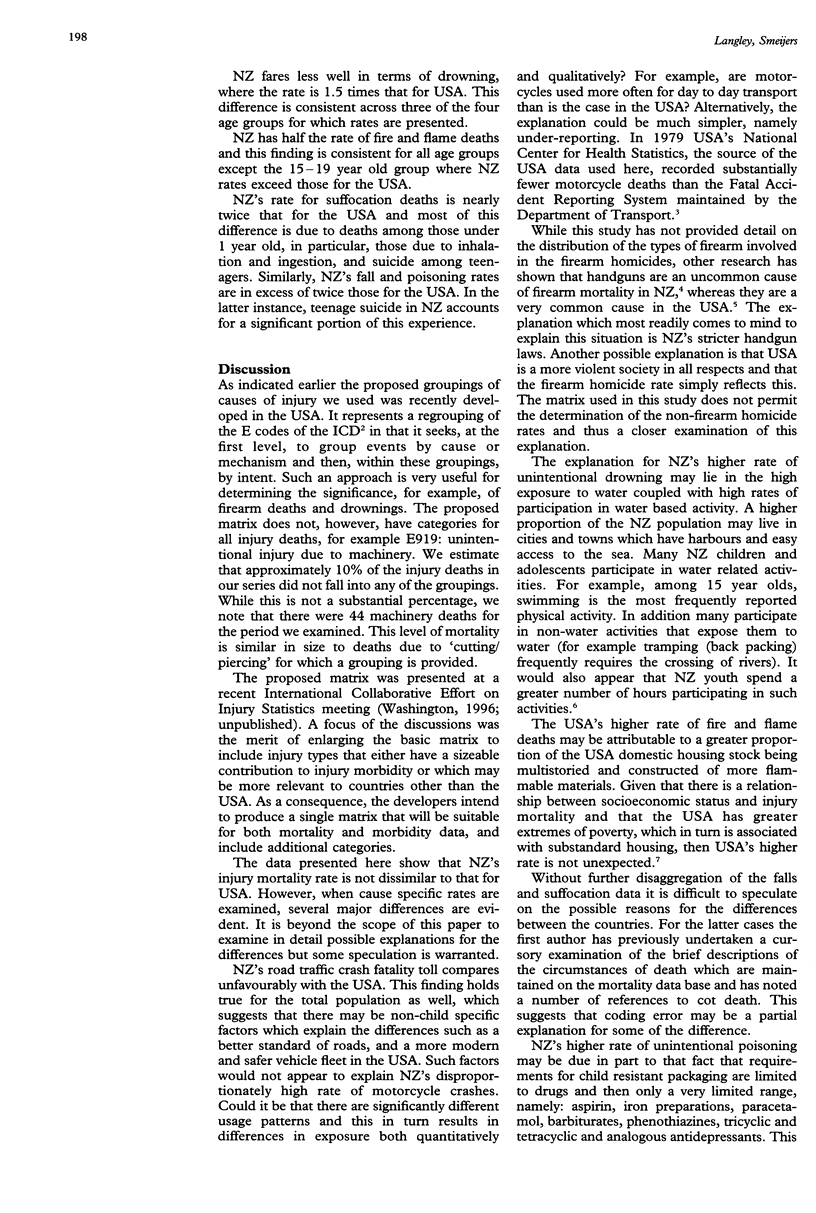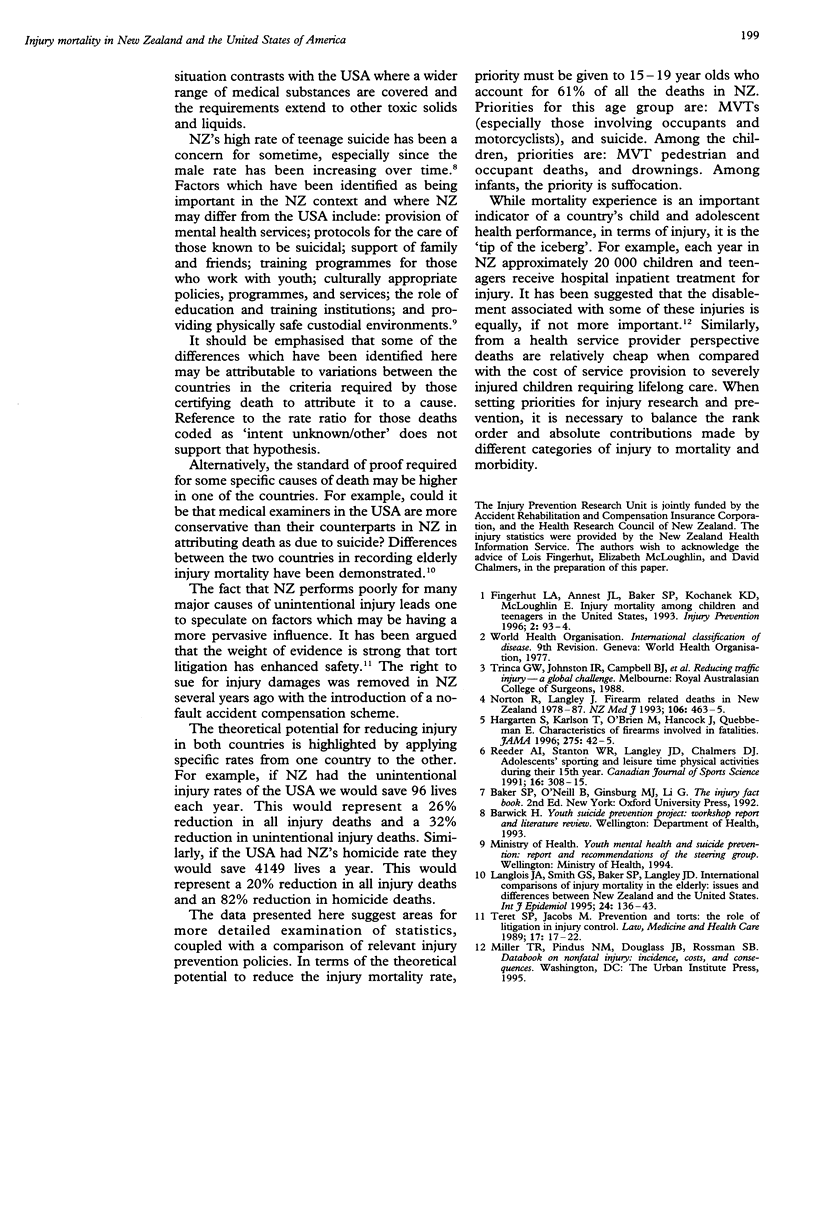Abstract
OBJECTIVES: New Zealand (NZ) has an unenviable track record in childhood injury mortality. We sought to describe this burden and to compare it with the United States of America (USA), with a view to taking the first step in identifying potential areas in which NZ might benefit from injury control as practiced in the USA. METHODS: We identified all children and teenagers who had died of injury for the period 1984-93 from the NZ Health Information Service mortality data files. We compared their rates of injury with previously published rates for USA. RESULTS: The age specific rates follow a J shaped distribution, with high rates in the first year of life followed by a decline to the lowest rate, among 5-9 year olds, a marginally higher rate among 10-14 year olds, and a dramatic rise among those in the 15-19 age group. The specific causes of death vary considerably by age group. NZ's overall rate of child and adolescent injury is not substantially different from that of the USA, but marked differences are apparent when examining cause specific rates. CONCLUSIONS: In terms of the theoretical potential to reduce the total injury mortality rate, priority must be given to 15-19 year olds who account for 61% of all NZ injury deaths. Priorities for this age group are: motor vehicle traffic crashes (especially those involving occupants and motorcyclists), and suicide. Among the children, priorities are: pedestrian and occupant deaths, and drownings. Among infants, the priority is suffocation.
Full text
PDF




Selected References
These references are in PubMed. This may not be the complete list of references from this article.
- Fingerhut L. A., Annest J. L., Baker S. P., Kochanek K. D., McLoughlin E. Injury mortality among children and teenagers in the United States, 1993. Inj Prev. 1996 Jun;2(2):93–94. doi: 10.1136/ip.2.2.93. [DOI] [PMC free article] [PubMed] [Google Scholar]
- Hargarten S. W., Karlson T. A., O'Brien M., Hancock J., Quebbeman E. Characteristics of firearms involved in fatalities. JAMA. 1996 Jan 3;275(1):42–45. [PubMed] [Google Scholar]
- Langlois J. A., Smith G. S., Baker S. P., Langley J. D. International comparisons of injury mortality in the elderly: issues and differences between New Zealand and the United States. Int J Epidemiol. 1995 Feb;24(1):136–143. doi: 10.1093/ije/24.1.136. [DOI] [PubMed] [Google Scholar]
- Norton R., Langley J. Firearm related deaths in New Zealand 1978-87. N Z Med J. 1993 Nov 10;106(967):463–465. [PubMed] [Google Scholar]
- Reeder A. I., Stanton W. R., Langley J. D., Chalmers D. J. Adolescents' sporting and leisure time physical activities during their 15th year. Can J Sport Sci. 1991 Dec;16(4):308–315. [PubMed] [Google Scholar]
- Teret S. P., Jacobs M. Prevention and torts: the role of litigation in injury control. Law Med Health Care. 1989 Spring;17(1):17–22. doi: 10.1111/j.1748-720x.1989.tb01067.x. [DOI] [PubMed] [Google Scholar]


